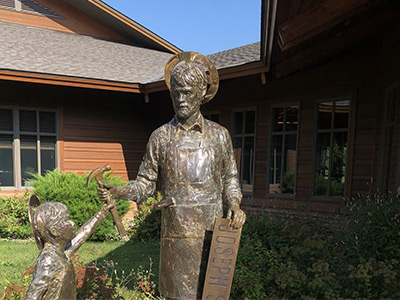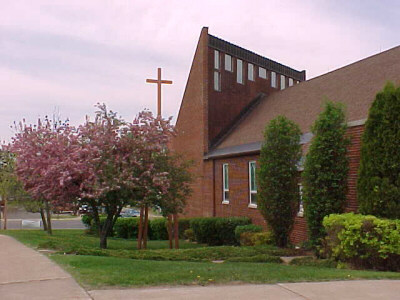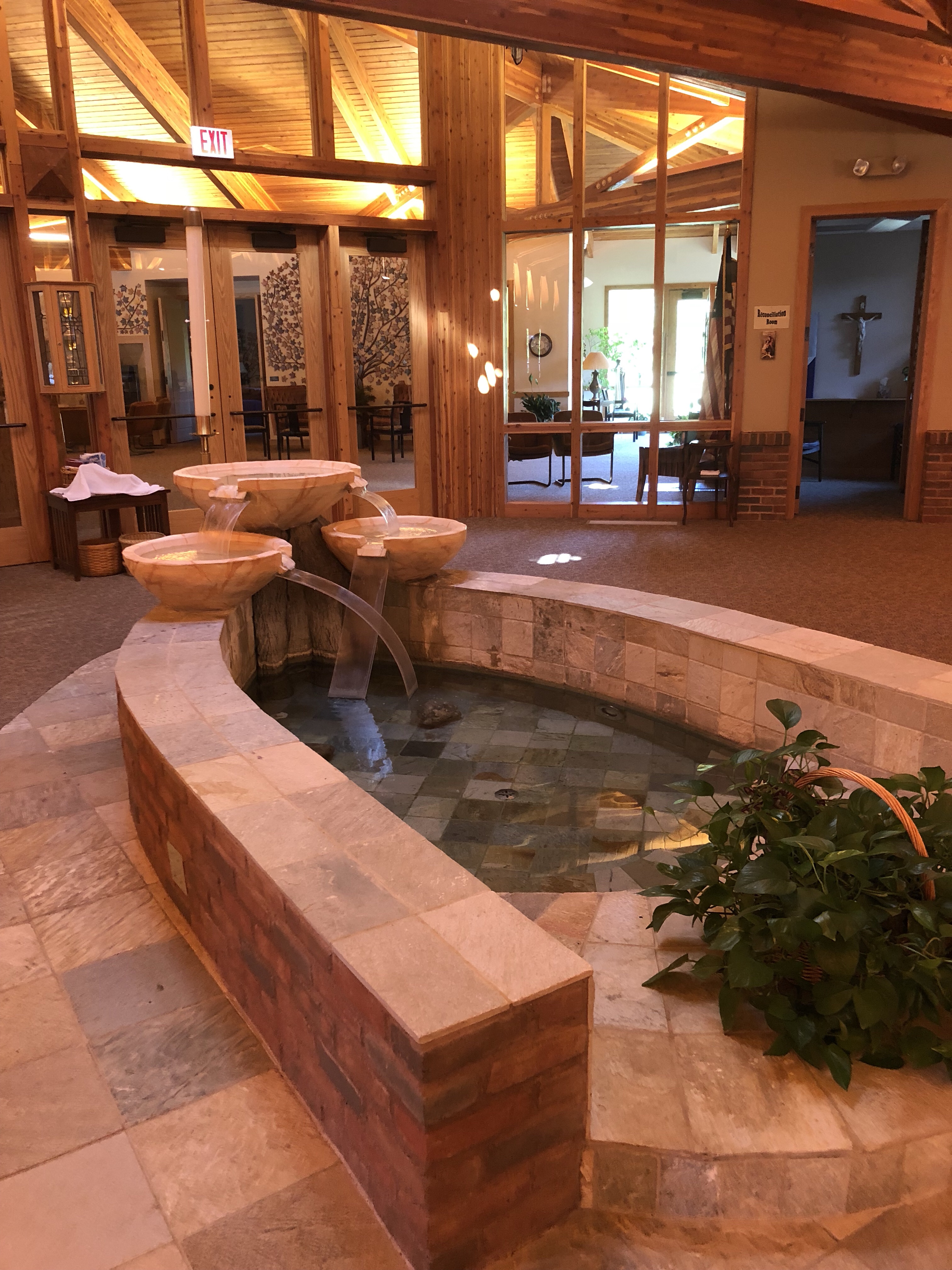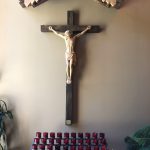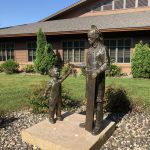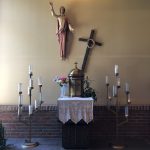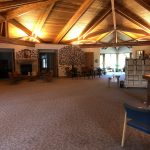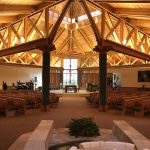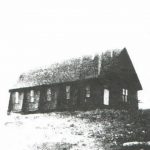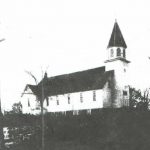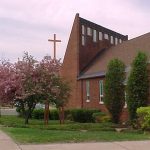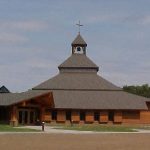Our Church and History
Parish Office Hours
Monday – Thursday 9:00 a.m. – 3:30 p.m. Friday 9:00 a.m. – noon
1050 N. Keller Avenue, Amery, WI 54001
Phone: (715) 268-7717
Email: office@stjosephamery.org
A Modern Church With a Traditional Message
St. Joseph Catholic Church is a vibrant Christian community that is
rooted in Tradition and growing in Faith.
Explore our website and discover the many ways its members are involved
in the liturgical life of the Parish.
Visitors are always welcome to attend our services!
Mission Statement
We the Roman Catholic Faith Community of St. Joseph Church in Amery, Wisconsin declares our parish mission is to know God, to love him and to serve Him in this world. We pursue this mission by celebrating the Eucharist and sharing our faith, love, time, talents, and treasures with our families, our communities and the world.
Meet the Staff
Pastor: Father Gerald Harris | 715-268-3163 | pastor@stjosephamery.org
Parish Business Administrator: Krista Stewart | 715-268-3172 | admin@stjosephamery.org
Faith Formation: Crystal Siebenaler | 715-268-3161 | faithformation@stjosephamery.org
Bookkeeper: Steven Rogers | 715-268-3165 | bookkeeper@stjosephamery.org
Building and Grounds: Mary Ann Larson, Dan Fleming, and Roger Waterman
Our beautiful church was dedicated in September of 2001. The warm wooden structure and Scandinavian design speaks to the roots of Amery as a lumber town built by immigrants.
Crucifix Behind The Altar
This sculpture/intarsia piece entitled Come Unto Me was created especially for St Joseph Catholic Church in 2001 by Sister Shirley Wagner, FSPA, and is made from different woods found in this area.
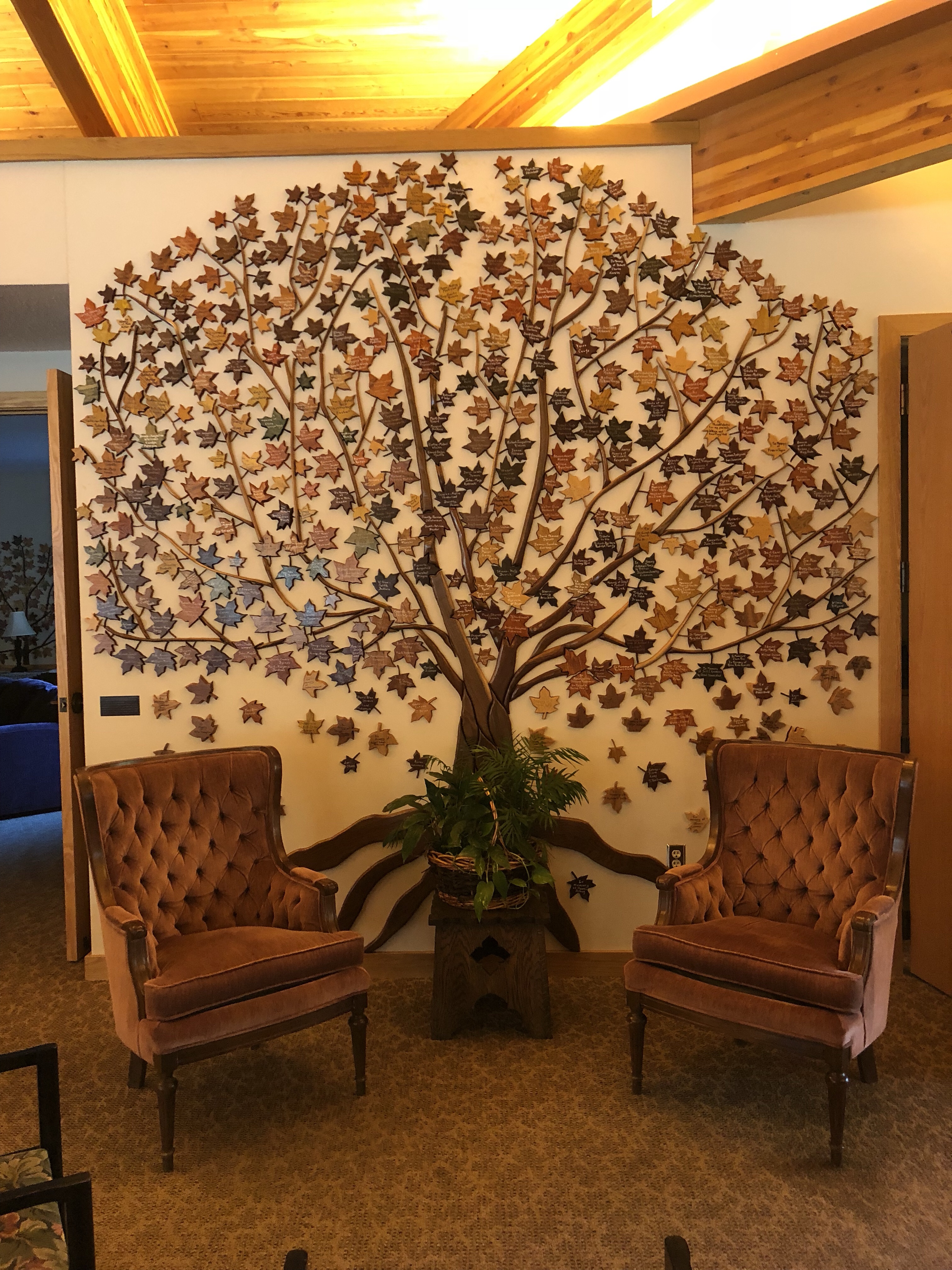 The Giving Tree
The Giving Tree
Our Giving Tree was designed and crafted by Sister Shirley Wagner, FSPA, for the generous donors who made possible this beautiful structure dedicated to St. Joseph for the honor and glory of God.
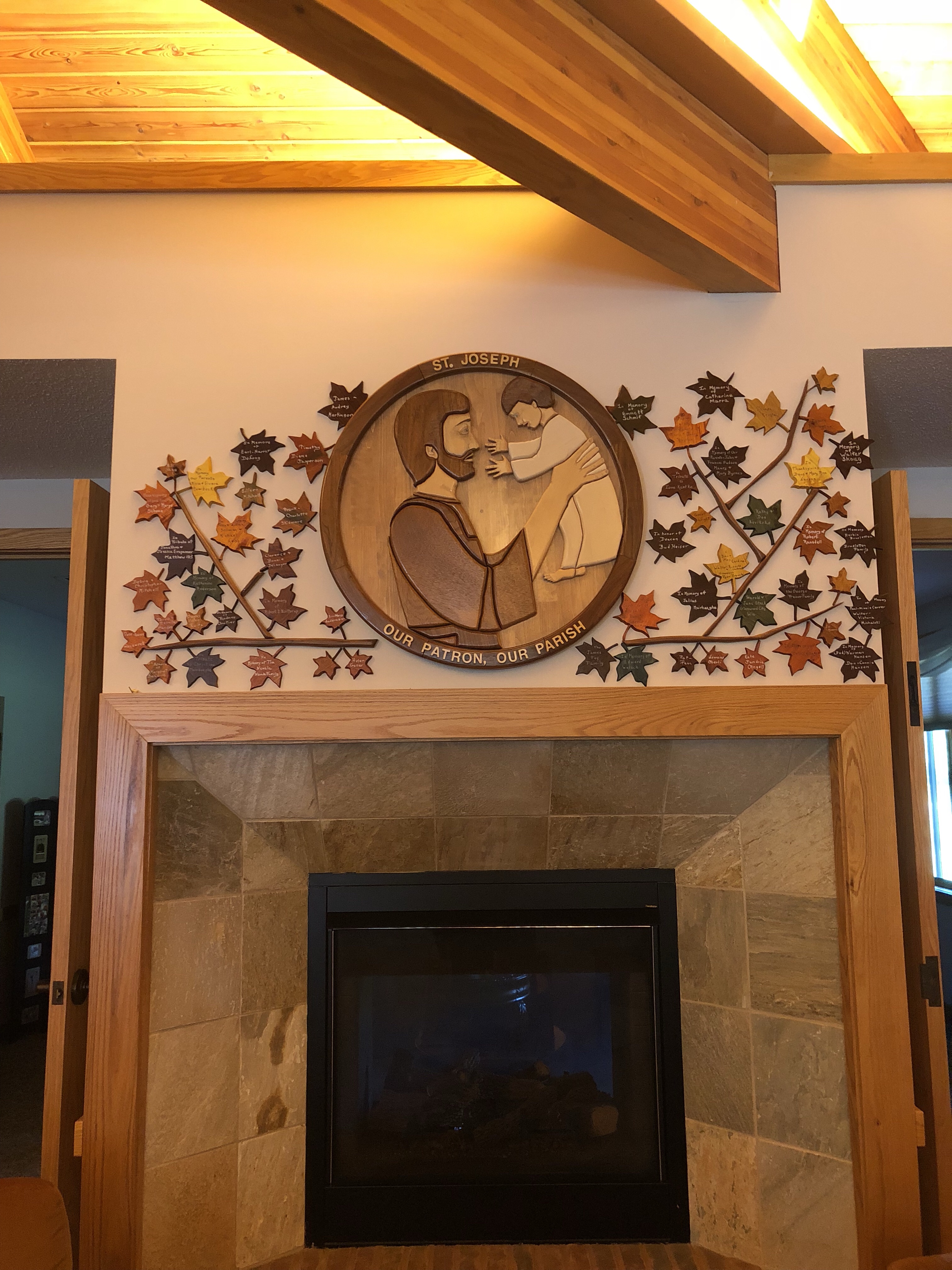 In keeping with the beautiful wooded area where the church was built, it was appropriate that the tree be made out of natural colored woods as much as possible. Woods used in the icon are walnut, aspen, crab wood, and basswood. The woods used in the leaves are pad auk, pink cedar, redwood, yellow heart, dyed black ash, white ash, and butternut.
In keeping with the beautiful wooded area where the church was built, it was appropriate that the tree be made out of natural colored woods as much as possible. Woods used in the icon are walnut, aspen, crab wood, and basswood. The woods used in the leaves are pad auk, pink cedar, redwood, yellow heart, dyed black ash, white ash, and butternut.
Our History
Major celebrations bring out the historians and the housekeepers especially Centennials! (1990) This was true at St. Joseph that year. In the process of housekeeping, the dusty green metal boxes furthest back on the storage room shelves were brought out to see if they contained any items that would make good historical exhibits. Among other yellowed records and papers we discovered two histories of St. Joseph. One was written by Fr. Arthur Weber after he left Amery in 1947. This is the history we have used for many years as our historical reference — and so did the “Catholic Herald”! The other history we found in some hand written notes by Fr. Kemerling written just before the church burned down in 1937. In checking the records with those of our “parent parish”, St. Ann of Turtle Lake, we found Fr. Kemerling’s to be a more accurate account of the first 45 years at St. Joseph. Therefore, we’d like to set the record straight and let Fr Kemerling tell us how we began in his own words:
“The earliest permanent Catholic settlers came into the territory of Amery and Apple River about 1864. From time to time these Catholics attended Mass in Somerset, Hudson and Stillwater. One of the earliest known missionaries to come through these parts was the Reverend Fr. H. J. Uritz who was then stationed at Somerset. In 1874 he visited some of the following places where he established missions – Apple River – Bear Trap – Balsam Lake and Wagon Landing. In 1876 he also attended Clayton; in 1879, Clear Lake. In 1880 Turtle Lake was added to his large list of missions. Later, Father Sylvester Buschkuhler OFM, Father Derenthal OFM, and Father Peter DeParadis passed through Amery and Bear Trap and ministered to the people. Sometime before 1890 Father LaPlant said Mass in the house which is now the home of Wm. Corty and later Mass was said in the town of Amery in Christoph’s store (now the Wis. Hydro office building).
“In 1890 Rt. Rev. Bishop Kilian Casper Flasch, while on a Confirmation tour in the vicinity, visited Amery with Fr. LaPlant. The present church site was inspected and approved. Two lots were purchased from Mr. John Briggs on August 14, 1890 for $125.00. The third lot was donated by an Improvement Co. with the condition that the back taxes be paid. Mr. Wm. Wilson then county treasurer, paid the tax on the lot and turned it over to the church.
On September 11, 1890 ground was broken. The hill was leveled off to a great extent and building commenced. Gen. Sam Harman, owner of the first lumber mill, donated 1000 feet of pine lumber. Mr. Mike McAllister donated the top flooring. Mr. Thomas Proulx donated the windows. On October 9, 1890 Fr. LaPlant said the first Mass in the new church.
“On account of the small number of Catholics and the limited resources at hand, the church was not improved until later years. The furnishings consisted of an altar, statues and some homemade pews.
“A number of different priests who resided at Turtle Lake ministered to the Catholic flock at the Amery mission during the succeeding years. In 1892 Father Fidelis Vollebregt; in 1894 Father A. Vollebregt, then Father J. F. Brouillard came. Then followed Father Trompeter in 1901-1907; Father Francis Leutschwager in 1907; Father Louis Scharcon 1907-10; Father Florian Gerhardts attended the Amery mission in 1911-13. At that time the mission of Amery had increased to such an extent that the Rt. Rev. Jos. M. Koudelka appointed the Rev Roman Fassbender (1913-1914) resident pastor of the Amery Parish. A house was purchased for the sum of $800.00. Rapid improvements were made to the church. A full basement was put under the church, a retaining wall was built around the north and east side of the church lot, a sanctuary and sacristy were added to the church building. New altars and communion railing replaced the old.
“From that time on pastors followed each other in rapid succession, hence: Fr. William Kubelbeck, 1915; Fr. Edward Savageau, 1915-1917; Fr. Peter Rivers, 1917; Fr. Joseph Arts, 1917-1918; Fr. Lucius Mortriner, 1918-1920 and Fr J. A. Rochon, 1920-1922. During Fr. Rochon’s administration the old house was sold and a new house and lot adjoining the church grounds to the west was bought leaving a mortgage of $2,600.00 on it. After Fr. Rochon left, Amery received ministrations from Fr. Catterlin, a Redemptorist priest who conducted a mission; the Rev. H Breski, Fr. Keenan and Fr. Peter Meyer.
“On July 13, 1922, Father Eric C. Kemerling was appointed to Amery and its missions: Georgetown, Apple River and Clear Lake and is the present incumbent. Since that time many more improvements have been added to the church property. The Church has been repaired, repainted, stained glass windows replaced the old – the Way of the Cross has been erected in beautiful statue form, new pews replace the old, ornamental tops have been added to the side altars, a pipe organ was purchased and the entire church and furnishings have been renovated, besides improving the church basement with floors and ceiling. A cement side walk was laid to and around the church property. The rectory, which up to this time was only a shack, was remodeled, a full basement and garage were built in after the house had been moved back from the street. City water and sewer were laid up to and into the property, and the rectory was modernized with light, heat and new furnishings. All the improvements were paid for with cash as they were made.
“The congregation may be termed cosmopolitan for it is comprised of many nationalities: French, Irish, German, Italian, Scandinavian, Bohemian, Polish and Belgian people. There are not many families in the parish and therefore one can imagine what the whole hearted sacrifices of the good people have been in bringing their church property to its present form.”
Some of our parishioners at the time of the church’s centennial were growing up during this period. They remembered Fr. Kemerling because he played tennis with the kids of all faiths on the court he had built near the church and for taking the altar boys swimming once a week at Hickory Point on Lake Wapogasset. Times were hard so farmers brought wood to the church for the pot bellied stove that heated the sacristy to help pay their church dues. Pew rent at the time was $32.00 per year. When Margaret and Bill Thompson were married in 1926, the altar boys used Father’s cincture to “catch” the newlyweds at the door to collect their fee. The priest was paid $10.00 for performing the ceremony.
On the morning of October 6, 1935 the first fire of the year was built to heat the church before Mass. Emmett Kelly was delivering papers that morning when he noticed smoke and flames at the church. He ran to the church and heard the bell fall from the tower with a deadening thud. Leonard Grenz covered his head with a coat and rescued the Blessed Sacrament just before the floor and ceiling caved in. The side walls of the church remained standing at an angle which made it possible to save the Stations of the Cross. Les and Bert Thompson drove school buses to take people to church in Georgetown that day.
During the next two years Mass was held in the basement of the burned out church while plans were made for a new church. Property was purchased in “Danielson’s Park” at the corner of Hyland and Wisconsin Avenues. The parishioners went to work again, hauling dirt from the Arlington area to fill in the swampy “frog pond” in front of the church. Father Kemerling was transferred to Eagle River in February of 1937, but his successor, Fr. Arthur Weber continued the plans for the new church and construction began in July of that year. Less than 5 months later the red brick edifice, with seating capacity for 210 was completed. At this time there were sixty-five families in the parish.
Fr. Weber served the parish until 1947. He was followed by members of the Precious Blood order, including Frs. Leo Weigel, Urban Hoying, Henry Hess, Joseph Hajduch, Jerry Hoepf and James Hinton.
By the time Fr. Hinton arrived in 1974 the parish had grown to include 274 families and the need for additional space was apparent. On August 26, 1975 ground was broken for a new addition to St. Joseph which doubled the seating capacity of the church and also provided space for four classrooms, a library and restrooms.
Diocesan priests began serving the parish in 1981. At that time Fr George Gleason replaced Fr. Hinton. Fr. Vincent M. Bromley served the parish from 1984 to 1990. On September 5, 1990 Fr. John A. Drummy came to serve the more than 400 families of St. Joseph Faith Community.
All through these years religious education has been provided for our children by our pastors, nuns and many lay people. Mary Waldbillig recalls being the first lay teacher for Saturday catechism classes, teaching the primary grade children in the back pews of the church while Fr. Weber taught 4th through 8th graders in the front. Sister Aloysius Formby was the first of the Servite Sisters to come from Ladysmith to teach summer catechism. Sister Katherine Stoffel taught at least 10 years while Fr Weber was here. In 1956 members of the Sisters of St. Joseph of St. Francis came to live in the convent and teach religion to the children on a regular basis. Sister Magdalen and Sister Angela served us in this way until their retirement in 1987. Sister Shirley Wagner, FSPA, as Pastoral Associate, served the parish in many areas of ministry from 1984 to 1988. Colleen Tolliver served as Director of Religious Education until 1998. Coordinators of Religious Formation in the first decade of the new century were Marita Beaudette for grades 6-12 and Lisa Cerney for grades K-5 including the nursery and preschool programs. The current Director of Religious Formation is Mary Modjeski and Joyce Holt serves as Coordinator.
On May 29, 1988, Bud Heiser was ordained a Permanent Deacon at St. Joseph and retired in 2011. On July 29, 2001, Larry Bauer was ordained Permanent Deacon. Deacon Pat Derrington joined St. Joseph from Immaculate Conception in New Richmond in the summer of 2011.
Fr. John Drummy began the work of building our new church in November 1991 when he met with 12 members of the parish. More meetings were held during 1992, during which the group determined we needed an improved financial base before going ahead. The Building Committee was expanded in 1995 and two surveys were taken to evaluate the feelings of the parish about remodeling or building. In July 1996, the project got into full swing – the church was toured to evaluate its potential and liabilities. Subcommittees were established to gather facts about various aspects and needs. In October and November of 1996 each subcommittee made a report on their fact finding assignments. During the first six months of 1997 the Building Committee met to weigh our options between remodeling our old church, tearing down the old church to rebuild on the same site or to build a new church on a new site. As part of this process various locations in the city of Amery were visited and evaluated. After weighing all the facts, on June 18, 1997, the Steering Committee recommended to the Building Committee that we build on the York Property. After that we asked the parish and once the votes were counted we really started moving – -interviewing architects, looking at plans, choosing a builder – the rest of 1997, 1998 and 1999 just raced by with all the meetings on what to build and how to use our resources properly. Finally we broke ground on September 15, 2000. The first stage of the building project ( the Sanctuary and Gathering Areas) were completed and the church was dedicated by Bishop Raphael Fliss on September 20, 2001. In 2002, the balance of our building project was completed.
As we look back at our history, it’s apparent that the pastors and people of St. Joseph have a tradition of planning and building to create a place for the families of God to come and worship. It is appropriate for us now to offer thanks for the vision of those who began St. Joseph by digging basements and hauling rocks… and to continue our second century with the hope that we can provide as well as they did for the spiritual needs of those who will follow us in faith.
